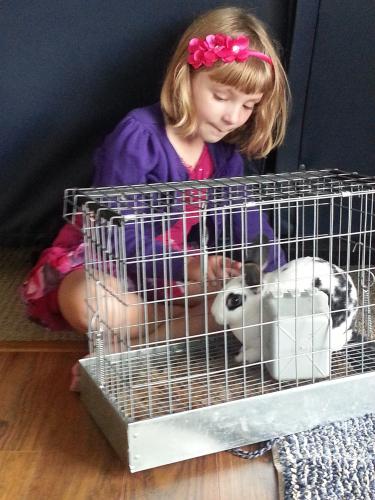Tips for parents when selecting a 4-H animal science project for cloverbuds
Choosing the right 4-H project better positions youth for success.
As we begin a new 4-H year, a new generation of 4-H’ers will reach the age where they can participate in the Cloverbud program. Choosing an animal science project for youth ages 5-8 can be challenging. However, with the proper support from parents, volunteers and 4-H staff, Cloverbuds can learn and grow in a safe and appropriate environment.
When selecting an animal science project to participate in, it is best when parents explore their child’s interests and find a project that is compatible. Children can be timid near animals, even if they  have been raised around them. Finding an animal that the child is comfortable with, and can gain confidence with is of the utmost importance according to Michigan State University Extension.
have been raised around them. Finding an animal that the child is comfortable with, and can gain confidence with is of the utmost importance according to Michigan State University Extension.
Some tips to help parents identify which animal science project to enroll their child in are:
- Explore! Network with older members involved in animal science programs and have your child “meet” their project animal. As a parent, you can watch your child’s reaction to each species and determine which might be a good fit.
- Communicate—talk to your child about their experience with the various animals. Ask them what they liked about the animal and what they didn’t like. Also, talk about the care that each animal needs in order to stay healthy. If you communicate with your child and gauge their responses, you may be able to evaluate how much time and attention your child will give to the project animal.
- Set realistic expectations—research shows that 5 to 8-year-old children respond best to projects that are short term; owning an animal is not short term, for the most part. Starting young children off by simply having them help with chores is a great way to expose them to the responsibility of animal ownership. Understanding that you, the parent, are going to have to provide a significant amount of support in the care and management of the animal is also very important.
Although there are no competitive events for 5 to 8-year-olds in Michigan 4-H Youth Development, show preparation does not have to be included during this time. Parents and 4-H leaders can use this stage of 4-H membership to focus on education and build the child’s excitement to keep them interested in animal science projects!
Visit the Michigan 4-H animal science page to learn more.



 Print
Print Email
Email





